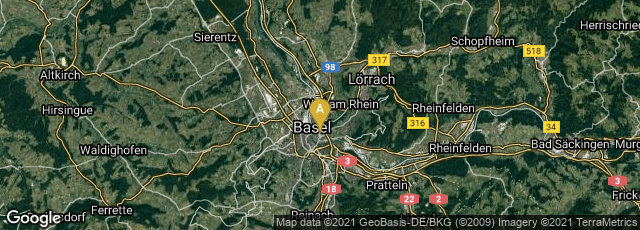

A: Rosental, Basel, Basel-Stadt, Switzerland
In 1772 Wilhelm Haas, a typefounder in Basel, built a new type of printing press for printing books, in which all parts of the press subject to stress during the printing process were made of iron, including both the bed and the platen. This significantly improved the power and efficiency of the press. To publicize these advances to printing in 1790 Wilhelm Haas (the younger) issued a pamphlet from Basel about the new press invented by his father: Beschreibung einer neuen Buchdruckerpresse 1772. A facsimile of this was published by the Gutenberg Museum in Bern in 1955.
"Despite the fact that the staple was made of iron, it tended to break, and a model with a strengthened frame was constructed in 1784. This fracturing of the frame, which later was to concern the inventor of the first all-metal press, Lord Stanhope, indicated that the simple replacement of wood by iron in itself was not sufficient to counter-balance the stress provided by more powerful printing mechanisms. Attention had to be given to the precise design of the iron frame as well" (Moran, Printing Presses, p. 41).
Haas's innovations were not immediately applied by press builders, who continued to refine wooden presses.